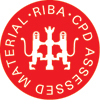An understanding of how sound behaves in modern offices, and how to control excessive airborne sound, or noise as it then becomes known, is essential. Through the use of computer modelling, noise mapping and a knowledge of processes including flanking and noise masking, this programme looks at how acoustic engineers tailor to achieve that control.
Key learning:
- The difference between noise absorption, deflection and diffusion
- Why noise mapping is such a useful tool
- What is flanking and why is it a problem
- Why an understanding of reverberation is key to controlling noise
- How does sound travel through materials on a micro level
About the contributor
Duncan Templeton is a director at BDP and heads up the acoustics team. He began his career at BDP as an architect more than 30 years ago and has worked on more than 1,000 projects.
He set up BDP’s acoustics division in 1981and is the co-author of four books on design acoustics.
Paul Driscoll heads up BDP’s London office acoustics team. After graduating from the University of York he has worked in acoustics since 2005 and has run BDP’s London team since 2008.
Paul’s specialties include acoustic absorption, diffusion, facade design, attenuated ventilation methods and sustainable acoustic design.

 Disclaimer: NBS TV programmes are the intellectual property of RIBA Enterprises and it shall be a breach of this right to copy, or in any way exploit commercially or show in public any of the programmes without the express permission of RIBA Enterprises.
Disclaimer: NBS TV programmes are the intellectual property of RIBA Enterprises and it shall be a breach of this right to copy, or in any way exploit commercially or show in public any of the programmes without the express permission of RIBA Enterprises.
